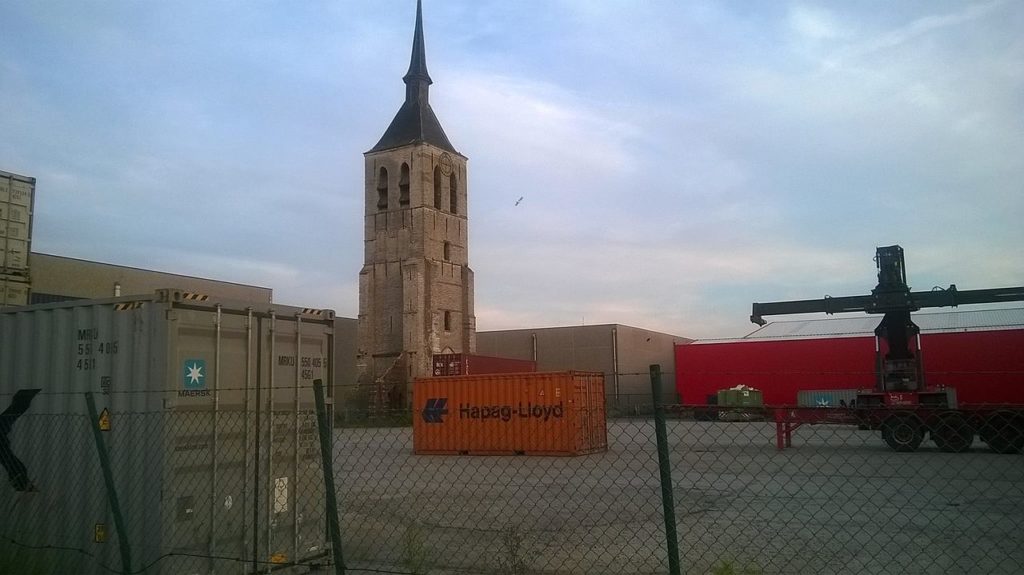The village of Doel in the commune of Beveren in East Flanders could be given a new lease of life, after the Flemish government ordered a new study to examine the village’s viability.
Doel was originally condemned to demolition in the 1960s, as part of the plans to extend the left bank of the port of Antwerp. Doel sits on the banks of the Scheldt river in the port area, but is officially situated in the neighbouring province of East Flanders.
The decision led to protests, with Doel (the word in Dutch coincidentally means ‘goal’ or ‘target’) regarded as the latest in a string of villages in the area which were razed into non-existence by the insatiable demand of the Port of Antwerp for territory.
Those names include Oosterweel, Oorderen, Wilmarsdonk and Lillo (although Fort Lillo, with a population of 32, still remains). Of the village of Wilmarsdonk nothing remains except the church tower, which stands alone surrounded by containers, now part of the port infrastructure.
Doel was once an independent commune, with a population in 1972 of about 1,300. By 2007, that number had plummeted to 388, and by 2014 to 147.
Faced with voluntary purchase requests for the land, most inhabitants accepted the offer and left Doel, seemingly forever. Other remained behind in protest, and they were joined by protesters from elsewhere, who then moved into the vacated houses.
There was little that could be done about the remainers, but the company charged with preparing the land for the new port development, MLSO, decided on a policy of attrition.
So unoccupied houses – by this time most of them – were left to crumble, while others were demolished after being allowed to become unsafe. Commerces and other facilities closed, turning Doel into a virtual ghost town in the hope of driving away the stubborn remainers.
But the protest remained in place, and succeeded in having the permit application for the construction of the dock which would have been built directly on the territory of the village, rejected. The grounds for the refusal of the permit: the company had not fulfilled its obligation to maintain the living quality of the village.
That plan will not now be carried out, but other harbour facilities will go ahead reaching virtually up to the doorsteps of the Doel residents.

All that remains of the village of Wilmarsdock is the church tower, now part of a container store.. © Isar Symen/Wikimedia
Now the Flemish government has decided to take a second look at the future of Doel, housing minister Matthias Diependaele (N-VA) told VRT News.
“We have decided to restart the procedure, and to continue with the working group on Doel, in which the municipality, the Flemish government and the various action committees are represented,” he said.
“The housing study must indicate what is still possible in Doel, knowing that there will be a container dock right next to it that will operate 24/7.”
The Doel nuclear power station, which stands on the edge of the village, was never concerned by the plans to extend the port.
Alan Hope
The Brussels Times

